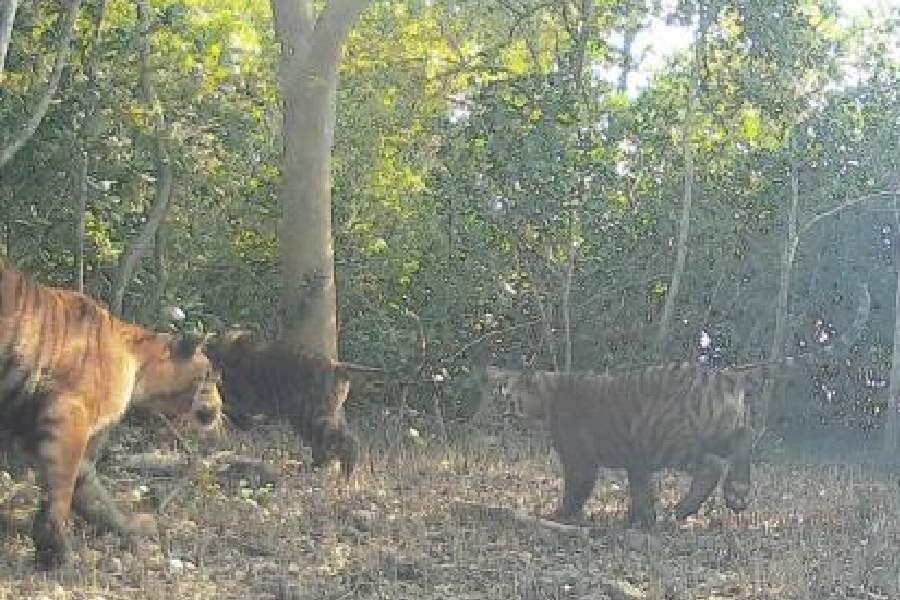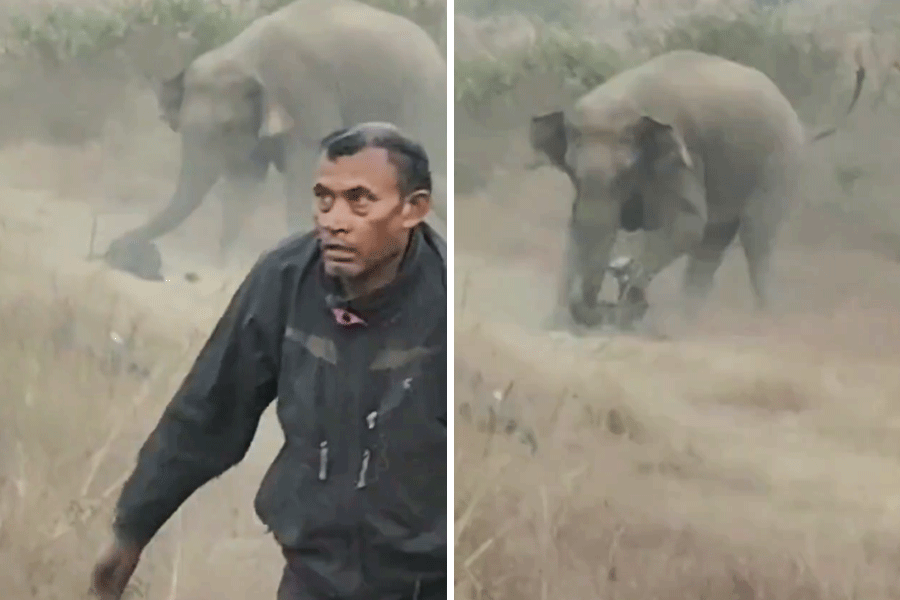Tiger cubs and juveniles are thriving in the Sunderbans, suggest images taken by trap cameras placed for an annual census of the big cat.
Forest officials stated that a healthy young population indicates the mangrove ecosystem is in good shape.
Trap cameras were placed in the forests of the Sundarban Tiger Reserve and Sundarban Biosphere Reserve (SBR), which covers the forests of the South 24-Parganas forest division, from November 2024 to January 2025.
“The cameras were in place for 45 days. They have captured more than three lakh images, a majority of which are of tigers. We have recorded several pictures of cubs with their mothers. The cameras have clicked multiple juveniles as well. They have started living on their own,” said a senior forest official.
A specific number of images does not always mean that many cubs or juveniles are present. One might have been captured multiple times.
The frequency of tiger cub sightings by tourists in the Sunderbans has also gone up, said foresters. Every time a tiger is spotted from a tourist boat, the guide registers the sighting with the forest department.
“Direct sightings by forest staff and pugmarks on the banks of creeks and rivers also suggest a healthy population of cubs and juveniles,” said the official.
The Sunderbans is spread across 10,000sqkm, a little above 4,000sqkm of which is in India. The rest is in Bangladesh. The Indian Sunderbans is split between the STR and the South 24-Parganas forest division.
The STR covers 2,585sqkm. It comprises the Sunderbans National Park (East and West), which is the core area, and the Sajnekhali Wildlife Sanctuary and the Basirhat Range, which form the buffer zones.
“We have cub images from all four zones, which is very encouraging. It shows that tigers are breeding in all four zones,” said an official of Sundarban Tiger Reserve (STR).
“Tigers don’t breed if the habitat is not conducive,” he said.
The annual exercise is conducted by the forest departments of the states that have tigers in the wild. The national tiger census, a quadrennial exercise, is controlled by the National Tiger Conservation Authority, which functions under the Union government.
In 2020-21, the state-level exercise pegged the number of tigers at 96 in the Sunderbans, the world’s only mangrove tiger habitat. But after
that, the state forest department stopped formally releasing the results of the annual count.
“The count is for internal analysis. The authoritative figures are only released by the NTCA,” said an official.
The last quadrennial national tiger census had its report — Status of Tigers: Co-Predators and Prey in India, 2022 — published in 2023. The report estimated 101 tigers in the Sunderbans. The number was 88 in the 2018 count. The estimation excludes cubs. Only tigers more than a year old are included in the count.
Forest officials linked more cub sightings to a rise in the tiger population.
Two-thirds of the tigers in the Sunderbans live in the STR, said one of them.
The 2022 exercise estimated that the tiger density in the Indian part of the Sunderbans had reached 4.27 per 100sq km. The mangrove forest’s estimated carrying capacity is 4.68 tigers per 100sq km, the report said.
A section of forest officials and wildlife experts believe the tiger count in the Sunderbans is nearing its saturation point.
Rajendra Jakhar, the field director of STR, called it a “premature” assumption.
“The carrying capacity is not cast in stone. If there is a sufficient prey base and minimum human interference, the carrying capacity can change. The trend in the Sunderbans is positive. It shows our conservation efforts are bearing fruit,” he said.











